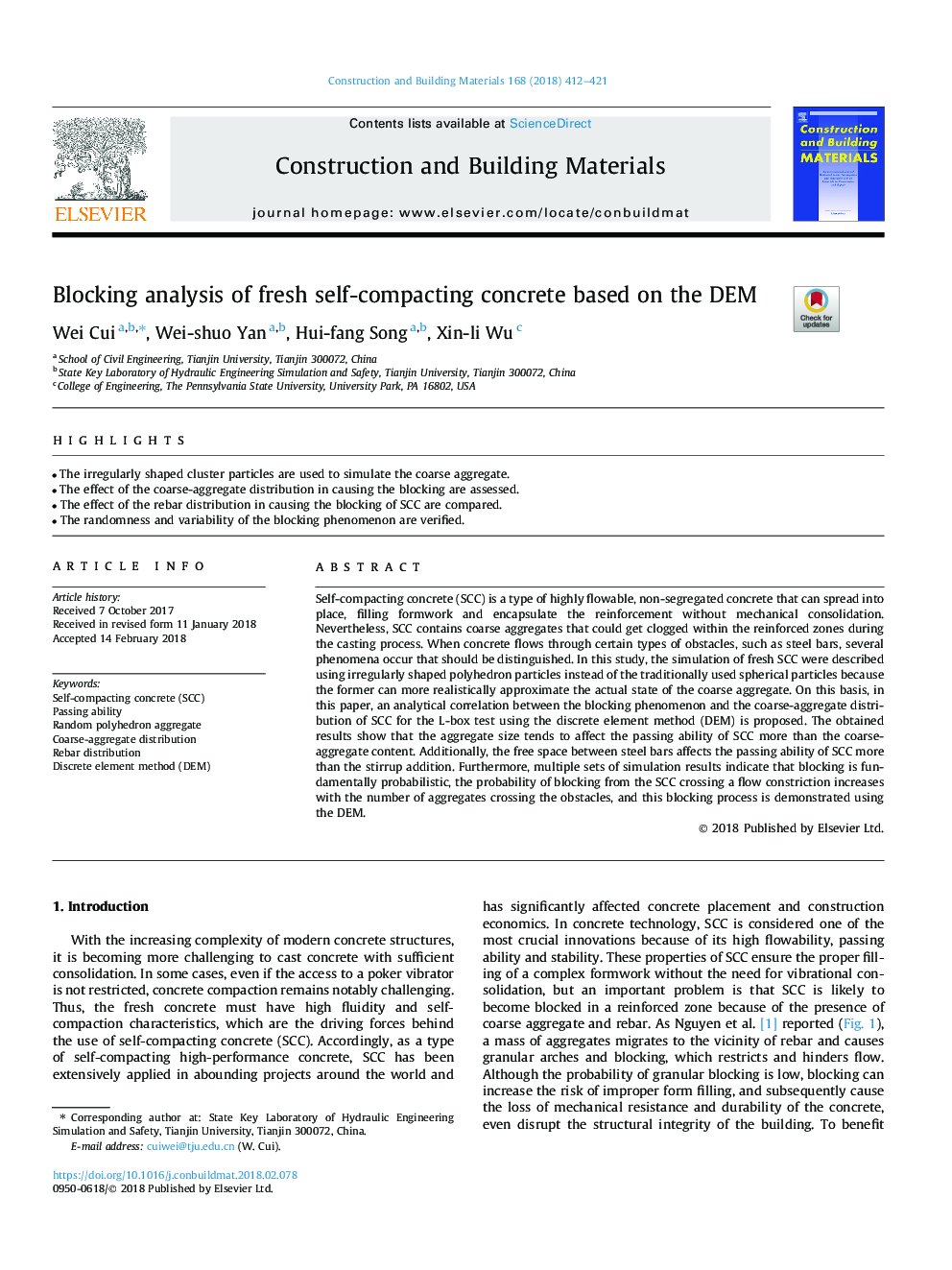| Article ID | Journal | Published Year | Pages | File Type |
|---|---|---|---|---|
| 6714847 | Construction and Building Materials | 2018 | 10 Pages |
Abstract
Self-compacting concrete (SCC) is a type of highly flowable, non-segregated concrete that can spread into place, filling formwork and encapsulate the reinforcement without mechanical consolidation. Nevertheless, SCC contains coarse aggregates that could get clogged within the reinforced zones during the casting process. When concrete flows through certain types of obstacles, such as steel bars, several phenomena occur that should be distinguished. In this study, the simulation of fresh SCC were described using irregularly shaped polyhedron particles instead of the traditionally used spherical particles because the former can more realistically approximate the actual state of the coarse aggregate. On this basis, in this paper, an analytical correlation between the blocking phenomenon and the coarse-aggregate distribution of SCC for the L-box test using the discrete element method (DEM) is proposed. The obtained results show that the aggregate size tends to affect the passing ability of SCC more than the coarse-aggregate content. Additionally, the free space between steel bars affects the passing ability of SCC more than the stirrup addition. Furthermore, multiple sets of simulation results indicate that blocking is fundamentally probabilistic, the probability of blocking from the SCC crossing a flow constriction increases with the number of aggregates crossing the obstacles, and this blocking process is demonstrated using the DEM.
Related Topics
Physical Sciences and Engineering
Engineering
Civil and Structural Engineering
Authors
Wei Cui, Wei-shuo Yan, Hui-fang Song, Xin-li Wu,
